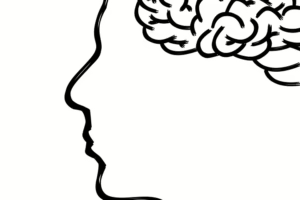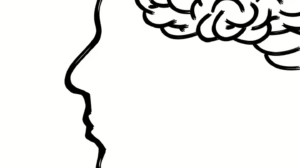Empathy and Altruism: The Psychology Behind Helping Others
In an increasingly interconnected world, the concepts of empathy and altruism stand at the forefront of human interaction. These powerful traits not only shape our individual behaviors but also serve as the foundation for a cohesive society. Understanding the psychology behind these concepts can help us appreciate what drives us to help others and why such acts are essential for our communities.
Defining Empathy
Empathy is the ability to understand and share the feelings of another person. It consists of both cognitive and emotional components. The cognitive aspect involves recognizing and understanding another’s emotional state, while the emotional component entails feeling a resonance with that state. This dual nature of empathy enables us to connect with others, paving the way for compassionate action.
The Neuroscience of Empathy
Research has identified various areas of the brain involved in empathetic responses, particularly the anterior insula and the anterior cingulate cortex, which become activated when we observe someone experiencing pain or joy. Mirror neurons also play a role, as they fire when we not only act but also when we see someone else perform an action. This mirroring allows us to mentally simulate another person’s experience, deepening our empathetic response.
Neuroscientific studies reveal that empathy is not a mere emotional response but involves complex brain processes. For instance, an experiment using fMRI (functional Magnetic Resonance Imaging) demonstrated that observing someone in pain activates the same brain regions that are activated when we experience physical pain ourselves. This reinforces the idea that empathy is rooted in our biology, highlighting how intertwined our emotional experiences are with those of others.
Understanding Altruism
Altruism refers to selfless concern for the well-being of others, even at a personal cost. This behavior can manifest in various forms, from donating time to volunteer work and acts of kindness. Altruism is often viewed as a moral imperative, with many cultures and religions emphasizing the importance of helping others.
Theories of Altruism
Several psychological theories explain why individuals engage in altruistic behaviors:
-
Evolutionary Psychology: Proponents suggest that altruism may have evolved as a survival strategy. By helping others, individuals can enhance the survival of their kin or create a more supportive community. This theory posits that altruistic behavior may ultimately benefit one’s genetic legacy. Studies supporting this theory show that individuals are often more altruistic toward those they are closely related to, reinforcing familial bonds.
-
Social Exchange Theory: This perspective posits that human interactions are governed by a cost-benefit analysis. People engage in altruistic acts if the perceived benefits, either direct or indirect (such as social approval or improved mood), outweigh the costs. For instance, someone may volunteer their time to help a charity, feeling a sense of fulfillment and social connection in return.
- Empathy-Altruism Hypothesis: Proposed by social psychologist Daniel Batson, this theory suggests that empathetic feelings can lead to altruistic behavior. When we feel empathy for another, we are more likely to help them, not because of any expected reward, but simply to alleviate their distress. Research has shown that individuals who enter situations with a high level of empathy are more likely to engage in helping behaviors, supporting the idea that emotional connections drive altruistic actions.
The Impact of Empathy and Altruism
Engaging in empathetic and altruistic behaviors has numerous benefits, not just for the recipient but also for the giver. Studies have shown that helping others enhances emotional well-being, reduces stress, and fosters a sense of belonging and purpose. Moreover, these behaviors can create a positive feedback loop, encouraging more acts of kindness within communities.
The Role of Empathy in Conflict Resolution
Empathy is vital in mediating conflicts, whether on an interpersonal level or within larger societal groups. When parties involved in a dispute can empathize with each other’s positions, understanding often paves the way for resolution. For instance, in restorative justice practices, fostering empathy between victims and offenders can lead to healing and reconciliation. By understanding each other’s experiences and feelings, individuals can move beyond anger and resentment, ultimately fostering societal harmony.
Moreover, empathy plays a crucial role in leadership and management. Empathetic leaders are more successful in motivating and managing teams, as they are better equipped to understand the feelings and challenges faced by their employees. This understanding can lead to improved workplace culture and increased productivity, underscoring the practical implications of empathy in various domains of life.
Nurturing Empathy and Altruism
Given the profound impact of these traits, it’s essential to explore how they can be nurtured. Here are several strategies to cultivate empathy and altruism:
-
Education: Incorporating empathy training into educational curricula can encourage young individuals to understand and appreciate diverse perspectives. Programs that emphasize social-emotional learning help students develop not only academic skills but also emotional intelligence.
-
Mindfulness Practices: Engaging in mindfulness can heighten emotional awareness, enabling individuals to connect more deeply with their own feelings and those of others. Mindfulness exercises, such as meditation focused on loving-kindness, can enhance empathetic responses and encourage an altruistic mindset.
-
Volunteering: Actively participating in community service exposes individuals to various social issues, enhancing awareness and empathy toward those in need. Volunteering can provide firsthand experiences that foster a deeper understanding of the challenges faced by different communities, encouraging ongoing supportive behaviors.
- Storytelling: Sharing personal narratives can deepen understanding and compassion. Listening to others’ stories can foster connections and humanize abstract issues. Programs that promote storytelling in communities can create platforms for sharing experiences, which can enhance empathy and encourage people to take action.
Conclusion
Empathy and altruism are fundamental aspects of human psychology that not only enhance individual lives but also fortify societal bonds. By understanding the roots and implications of these traits, we can encourage a more compassionate world. Ultimately, fostering empathy and altruism benefits all, creating a continuous cycle of kindness that uplifts communities and promotes a sense of shared humanity.
In a world often marked by division, committing to helping others can be a powerful antidote, uniting us in our shared struggles and joys. By emphasizing these qualities in our daily lives and broader societal frameworks, we contribute to a healthier, more harmonious global community. In the end, our ability to empathize and act altruistically lies at the heart of what it means to be human, making it essential to nurture these qualities for the betterment of society.


























Add Comment